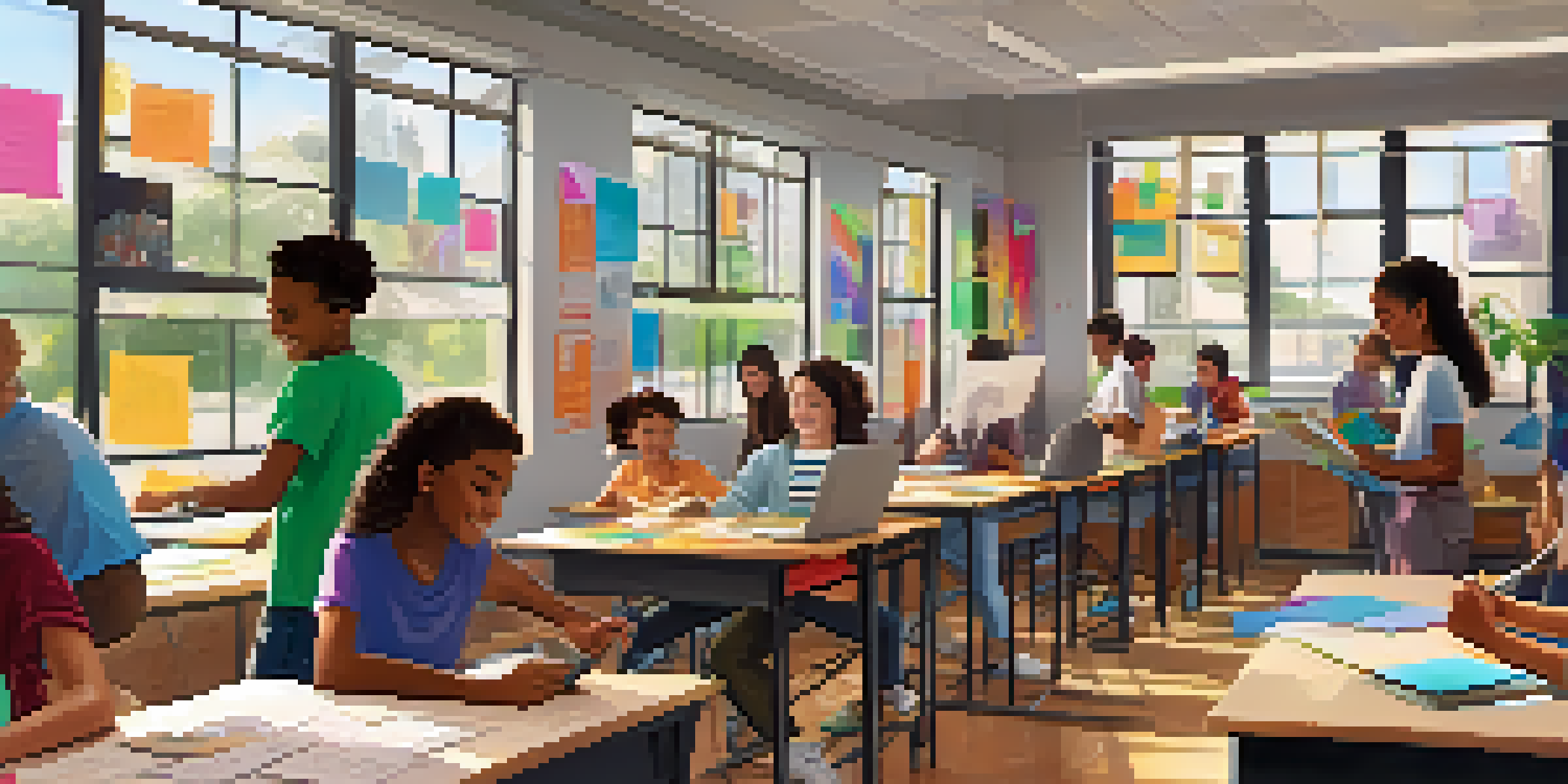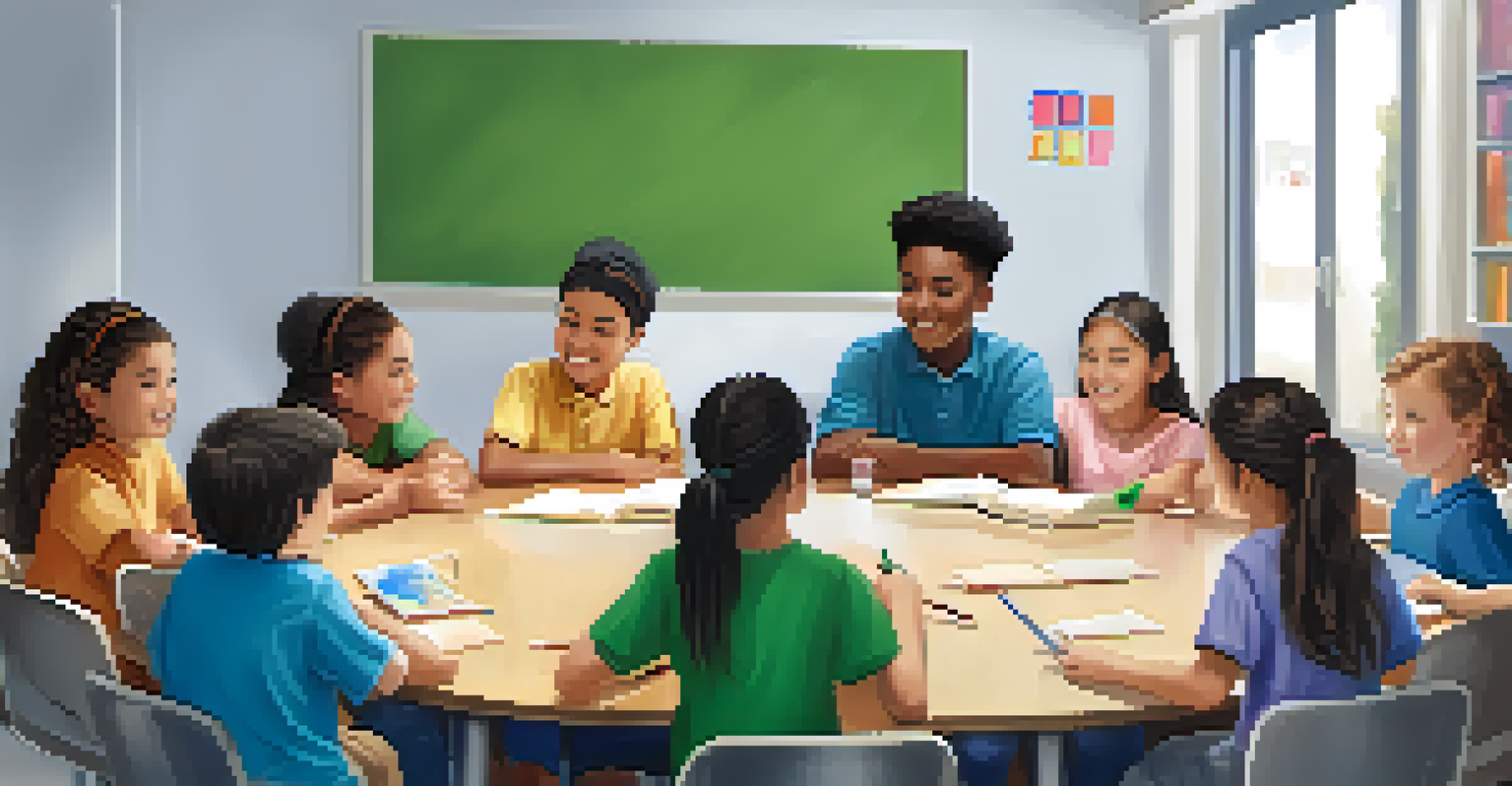Creating Inclusive Learning Environments with Collaboration Tools

Understanding Inclusive Learning Environments
Inclusive learning environments are spaces where all students feel valued and supported, regardless of their diverse backgrounds. It’s about recognizing and accommodating different learning styles, needs, and abilities. By creating such environments, educators help every student engage meaningfully with the content.
Inclusion is not a matter of political correctness. It is the key to growth.
Think of it like a puzzle where every piece has its unique shape; when you fit them together, they create a complete picture. This approach not only enhances academic performance but also builds self-esteem and social skills among learners. It’s a holistic way to foster a sense of belonging and community in educational settings.
Ultimately, the goal is to ensure that every learner has access to the resources and support they need to thrive. This is where collaboration tools come into play, acting as bridges that connect students and facilitate their learning experiences.
The Role of Collaboration Tools in Education
Collaboration tools are digital platforms that enable communication, sharing, and teamwork among students and educators. They can range from simple messaging apps to complex project management software designed specifically for educational purposes. These tools help break down barriers, allowing for more interactive and engaging learning experiences.

Imagine hosting a virtual classroom where students can collaborate on projects in real time, regardless of their physical location. This flexibility encourages participation from everyone, including those who may be shy or hesitant to speak up in traditional settings. The beauty of these tools lies in their ability to cater to various preferences and comfort levels.
Inclusive Learning Benefits All
Creating inclusive learning environments supports diverse backgrounds and fosters engagement, self-esteem, and community.
By utilizing collaboration tools, teachers can create dynamic learning activities that promote critical thinking, creativity, and collaboration. This not only enriches the educational experience but also prepares students for a future where teamwork and communication are essential skills.
Choosing the Right Collaboration Tools
With a plethora of collaboration tools available, selecting the right ones for your classroom can feel overwhelming. It’s essential to consider factors such as user-friendliness, accessibility, and features that support diverse learning needs. Popular options include Google Classroom, Microsoft Teams, and Slack, each offering unique functionalities.
The whole is greater than the sum of its parts.
For instance, Google Classroom is excellent for organizing assignments and facilitating discussions, while Microsoft Teams allows for video conferencing and collaborative document editing. The key is to choose tools that align with your specific learning objectives and cater to your students' needs.
Additionally, it’s crucial to involve students in the decision-making process. This not only empowers them but ensures that the chosen tools resonate with their preferences, promoting a more inclusive atmosphere where everyone feels at ease using technology.
Training Students on Collaboration Tools
Once you've selected the right collaboration tools, the next step is to provide training for your students. This ensures that everyone is comfortable using the technology and understands its features. Consider dedicating time at the beginning of the course to familiarize students with the tools and their functionalities.
Hands-on workshops can be particularly effective. For example, walk students through creating a group project using the chosen tool, allowing them to learn by doing. This interactive approach not only builds confidence but also encourages peer collaboration and support.
Collaboration Tools Enhance Learning
Digital collaboration tools facilitate communication and teamwork, making learning more interactive and accessible for all students.
Moreover, ongoing support is vital. Establishing a help channel where students can ask questions or share tips fosters a culture of collaboration not just in their assignments but also in learning how to use the tools effectively.
Encouraging Collaboration Among Diverse Learners
Collaboration tools can be powerful allies in promoting collaboration among diverse learners. By providing various ways for students to engage with content, these tools cater to different learning styles and abilities. For instance, visual learners may benefit from collaborative whiteboards, while auditory learners might prefer discussion forums.
Creating mixed-ability groups is another effective strategy. In these groups, students can leverage each other’s strengths, fostering an environment where everyone contributes and learns from one another. This not only enhances individual learning but also builds empathy and social awareness among peers.
Encouraging students to share their unique perspectives during group activities can lead to richer discussions and innovative solutions. By valuing each learner's contribution, collaboration tools help create a more inclusive atmosphere that celebrates diversity.
Assessing Collaborative Learning Outcomes
Assessing the effectiveness of collaboration tools in learning requires a thoughtful approach. Traditional grading methods may not fully capture the collaborative spirit and skills developed through these tools. Instead, consider alternative assessments like peer evaluations and group projects to gauge student engagement and contributions.
For example, you might implement a reflective journal where students document their collaborative experiences and what they learned from their peers. This not only provides insight into their learning journey but also encourages self-reflection and personal growth.
Continuous Learning is Essential
Fostering a culture of continuous learning helps educators adapt to new tools and practices, ensuring ongoing inclusivity in education.
Moreover, gathering feedback from students about their experiences with the collaboration tools can guide future improvements. This continuous loop of assessment and feedback ensures that the learning environment remains inclusive and responsive to students' needs.
Fostering a Culture of Continuous Learning
Creating an inclusive learning environment is not a one-time effort; it’s an ongoing journey. As educators, embracing a culture of continuous learning is essential for adapting to the ever-evolving educational landscape. Staying informed about new collaboration tools and best practices can enhance your teaching effectiveness.
Encourage a mindset of experimentation among your students, where trying out new tools and methods is part of the learning process. This not only keeps the classroom dynamic but also prepares students for a world that values adaptability and innovation.

Additionally, fostering connections with other educators can provide valuable insights and resources. Engaging in professional development opportunities allows for the exchange of ideas and strategies, ultimately enriching the learning experiences you provide.